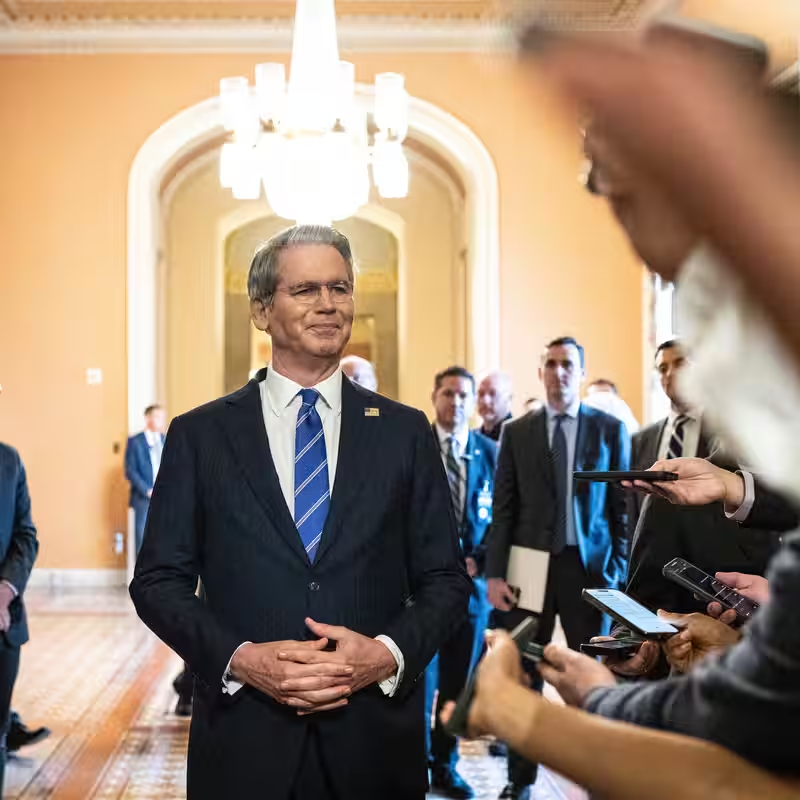The United States’ recent $20 billion financial lifeline to Argentina has ignited a fierce debate—not just about foreign policy, but about who really benefits when Washington steps in to stabilize a struggling economy. While Treasury Secretary Scott Bessent insists the move protects U.S. strategic interests, critics are raising red flags: a select group of well-connected investors may have cashed in big time.
What’s in the Aid Package?
Officially, the U.S. isn’t handing Argentina a blank check. Instead, the Treasury has rolled out a currency swap line and signaled its willingness to purchase Argentine bonds—a move designed to shore up confidence in the peso and prevent a full-blown economic collapse under President Javier Milei .
“We are giving Argentina a swap line, not putting money directly into the country,” Bessent clarified on social media, attempting to distance the action from a traditional bailout . Yet within hours of his announcement, Argentine bonds surged—and so did the portfolios of certain investors who had bet heavily on a U.S.-backed rescue .
Who Profited—and Why It Matters
By early September 2025, as political instability mounted ahead of Argentina’s key elections, many investors were fleeing Argentine assets. But a handful held firm—or even doubled down—on distressed debt, betting that U.S. intervention was inevitable .
When Bessent made his support public on October 2, those bets paid off handsomely. Argentine stocks traded on U.S. exchanges jumped 13% almost overnight . The timing has fueled speculation that insiders with advance knowledge—or strong political ties—positioned themselves to profit from the announcement.
Nobel laureate economist Paul Krugman didn’t mince words, calling the package a “bailout for Bessent’s buddies” and questioning whether public funds are being used to protect private investments rather than democratic stability .
Timeline of Key Events
| Date | Event |
|---|---|
| Early Sept 2025 | Investors dump Argentine assets amid Milei’s declining political fortunes |
| Oct 2, 2025 | Treasury Secretary Bessent announces U.S. readiness to support Argentina via bond purchases and credit lines |
| Oct 3–5, 2025 | Argentine bonds and U.S.-listed stocks surge by over 10% |
| Oct 10, 2025 | Critics intensify scrutiny over investor windfalls linked to U.S. aid |
Transparency or Favoritism?
The core concern isn’t just that investors profited—it’s whether the U.S. Treasury’s actions were calibrated to serve national interests or private gain. Bessent argues that a stable Argentina prevents regional contagion and aligns with U.S. geopolitical goals in Latin America. But without clear disclosure of which institutions held large positions before the aid announcement, skepticism will persist.
This isn’t the first time U.S. financial interventions abroad have sparked controversy. Past bailouts—from Mexico in the 1990s to Greece in the 2010s—have drawn similar accusations of enriching Wall Street at taxpayer expense.
What’s Next for Argentina?
President Milei’s reform agenda remains fragile. While the U.S. support provides breathing room, long-term stability hinges on domestic policy—not foreign credit. If the aid package merely props up markets without structural reforms, the cycle of crisis and rescue could repeat.
Sources
- The New York Times: Critics Say Select Investors Gained From US Aid to Argentina
- Bessent’s X (Twitter) statements on U.S. support for Argentina
- Market analysis on Argentine asset performance post-announcement
- Paul Krugman’s critique of the aid package




